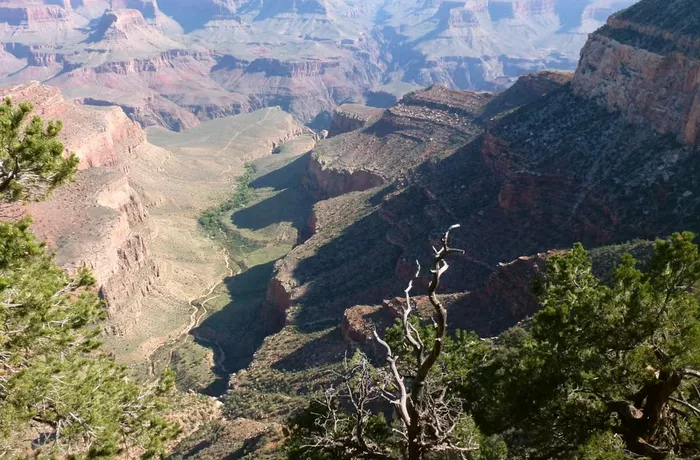With extreme temperatures baking the Grand Canyon, the National Weather Service (NWS) has issued a stark warning for hikers: stay out of the canyon this week or face serious risks.
On Monday morning, the NWS issued an extreme heat warning across portions of Arizona, effective through Friday at 7 p.m. In particular, hikers are being urged to avoid physical activity in the Grand Canyon due to the sweltering conditions.
“Day hikers on Bright Angel Trail should descend no farther than 1.5 miles from the upper trailhead,” the NWS advised. It also cautioned that between 10 a.m. and 4 p.m., hikers should be either out of the canyon or staying at designated safe zones like Havasupai Gardens or Bright Angel Campgrounds, where physical exertion should be minimized.
While Arizona often deals with intense summer heat, this extreme heat warning designation is reserved for only the most dangerous days of the year—those with temperatures above 105°F lasting more than three hours daily for two consecutive days.
In the coming days, daytime temperatures inside the canyon are expected to range from 102°F at Havasupai Gardens to a blistering 114°F at Phantom Ranch. Sustained heat is forecasted to continue through Friday, posing significant dangers below 4,000 feet.
“Most individuals will be at risk for heat-related illnesses without effective cooling or proper hydration, especially with prolonged outdoor exposure,” the NWS said in its bulletin.
The threat is not hypothetical. In May, 74-year-old Dennis Smith died while hiking the Rim-to-Rim trail. Despite being described as an experienced hiker, Smith became unresponsive on the North Kaibab Trail. Though no official cause of death was released, the incident highlighted the life-threatening danger the canyon’s extreme heat poses. Last summer, three hikers died in just three weeks under record-breaking temperatures.
While it’s often difficult to confirm whether heat is the direct cause of death in each case, experts agree that high temperatures significantly raise the risk of fatal incidents in the park. Over the last decade, approximately 17 people have died in the Grand Canyon, with cardiac arrest—often triggered by heat stroke—being the leading cause.
Nationwide, heat-related deaths have surged. Between 1999 and 2023, there was a 117% increase in heat-related fatalities, and that upward trend is accelerating, particularly in areas like the Grand Canyon.
A 2023 PLOS ONE study confirmed that climate change is pushing Grand Canyon temperatures higher, and with it, heat-related deaths are projected to rise. Despite the dangerous heat, the park still experiences peak visitor numbers in summer—when emergency response times can be slowed by the same heat that endangers hikers.
Park data show a direct link between temperature and emergency calls. When canyon temperatures reach 95°F, distress calls increase by 71%.
The heat isn’t limited to the Grand Canyon. Across Arizona, conditions remain harsh. Tucson, the Gila River Valley, and Pima County are all seeing highs up to 112°F, while surrounding areas are expected to reach between 100 and 106°F.
In 2024, Phoenix shattered records with a 113-day streak of 100-degree days, underscoring the severity of the region’s climate trend.
Bottom line: With temperatures this extreme, hikers are urged to reconsider any plans to explore the Grand Canyon this week. The risks are real—and increasingly deadly.
Related Topics
- Texas Teen Tragically Dies After Falling from Tree on Oregon Hike
- Fremont Man Survives 9 Days in Himalayas After Injury, Family Seeks Help for Medical Costs
- Cooler-Weather Hikes Just Steps Away From Downtown Idyllwild Offer Refreshing Outdoor Escape

